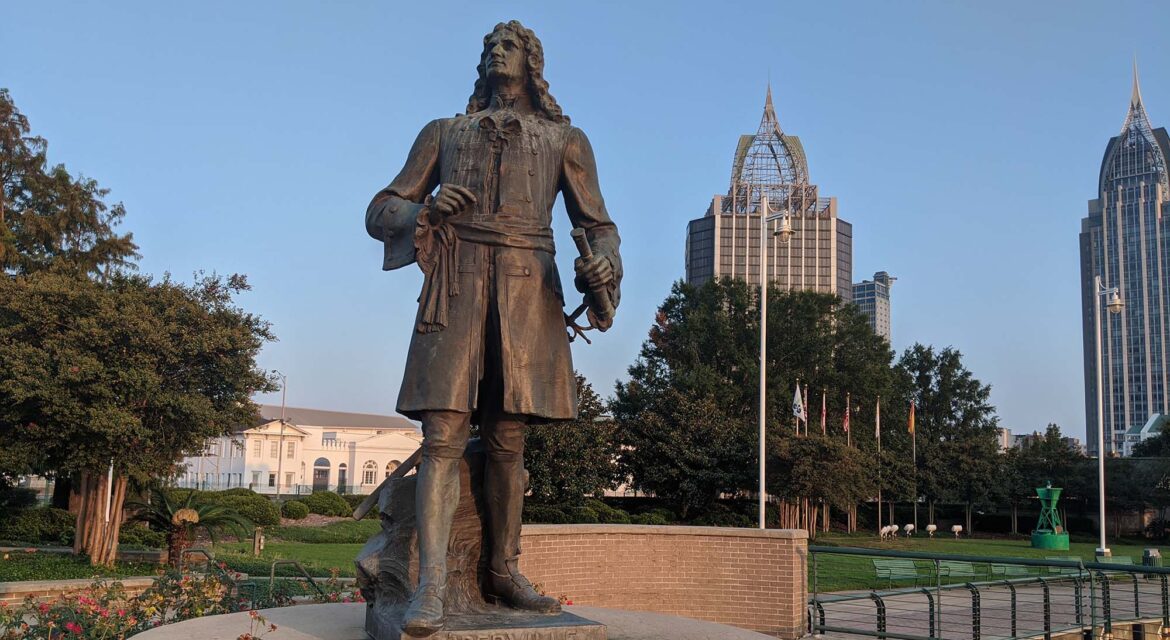 A three-acre park that resides on the port where the Mobile river meets the Gulf of Mexico, Cooper Riverside Park provides audiences with a place to watch the ship traffic as well as enjoy the natural beauty of the landscape. Located in the heart of Mobile, Alabama, Cooper Riverside Park features numerous attractions that have allowed it to cultivate an identity for Mobile that resonates with both residents and visitors.
A three-acre park that resides on the port where the Mobile river meets the Gulf of Mexico, Cooper Riverside Park provides audiences with a place to watch the ship traffic as well as enjoy the natural beauty of the landscape. Located in the heart of Mobile, Alabama, Cooper Riverside Park features numerous attractions that have allowed it to cultivate an identity for Mobile that resonates with both residents and visitors.

The History and Identity of Mobile
 The history associated with Cooper Riverside Park extends back for centuries, long before the park was established. Near the site is where the last documented cargo of Africans landed in 1860 to mark the final recorded attempt to import Africans to the United States for the purposes of slavery. It is also near the Africatown/Plateau Cemetery, where many of the African survivors of that last slave ship were buried. Some of this history has been explained in great detail in various markers.
The history associated with Cooper Riverside Park extends back for centuries, long before the park was established. Near the site is where the last documented cargo of Africans landed in 1860 to mark the final recorded attempt to import Africans to the United States for the purposes of slavery. It is also near the Africatown/Plateau Cemetery, where many of the African survivors of that last slave ship were buried. Some of this history has been explained in great detail in various markers.
Monuments across the park reflect a different kind of history, as a bronze sculpture depicts Stevedoring executive Ervin Cooper looking over the Mobile riverfront. The bench the sculpture is sitting on was cast by the Waterman Steamship Company in the 1940s.
There are various other monuments throughout the park, the most notable of which is the statue of Pierre Le Moyne d’Iberville, who built a fort in what would become Mobile in 1701. The statue was a gift from Hand Arendall, L.L.C., which is the largest law firm in the City of Mobile. Nearby is a monument dedicated to the men and women of the U.S. Coast Guard and its predecessor agencies who served from facilities in Mobile in an unbroken since 1819.
These monuments and markers are connected to the past of the city but there are various other elements that showcase how Cooper Riverside Park connects with audiences in the present.

Tours, Events and More
 Numerous sculptures the celebrate the history and culture of the area are located throughout the park. “Portal,” is a 13-foot-high, stainless-steel sculpture by Casey Downing. The piece was commissioned by the Art Patrons League for the millennium and Mobile’s Tricentennial. Additionally, the fountain that resides in the park is a popular attraction but has also become a central feature of the logo of the Downtown Mobile Alliance. Doing so showcases one of the ways the park has been able to create an identity that means something distinct to both residents and visitors.
Numerous sculptures the celebrate the history and culture of the area are located throughout the park. “Portal,” is a 13-foot-high, stainless-steel sculpture by Casey Downing. The piece was commissioned by the Art Patrons League for the millennium and Mobile’s Tricentennial. Additionally, the fountain that resides in the park is a popular attraction but has also become a central feature of the logo of the Downtown Mobile Alliance. Doing so showcases one of the ways the park has been able to create an identity that means something distinct to both residents and visitors.
Cooper Riverside Park serves as a hub of activity for all different types of activities. Its’ location on the water has made it an ideal spot for tour groups to meet and explore the area. The park also contains an outdoor theatre to host many special events. The park offers WildNative tours and is steps away from the National Maritime Museum, the Exploreum Science Center and the Mobile Alabama Cruise Terminal.
The location of Cooper Riverside Park has allowed it to serve as a hub of all different types of activities. These activities have been enabled and cultivated in various ways but they’re all the result of a larger endeavor to utilize Cooper Riverside Park to further develop the identity of Mobile.

Defining an Identity for Mobile
 Whether someone wants to enjoy a green oasis in downtown Mobile, watch the ship traffic in Mobile’s busy port or attend an organized event, Cooper Riverside Park provides audiences of all types with numerous options. These options are all directly related to the identity of Mobile, highlighting what it can mean when a simple green space is developed as something that can engage residents and visitors in an especially meaningful manner.
Whether someone wants to enjoy a green oasis in downtown Mobile, watch the ship traffic in Mobile’s busy port or attend an organized event, Cooper Riverside Park provides audiences of all types with numerous options. These options are all directly related to the identity of Mobile, highlighting what it can mean when a simple green space is developed as something that can engage residents and visitors in an especially meaningful manner.

